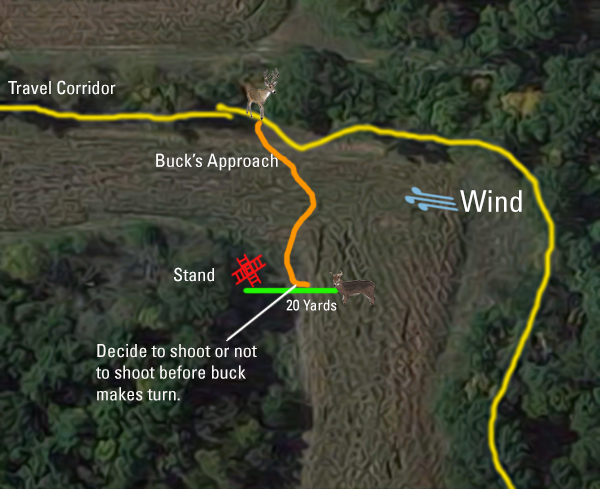Nov 10, 2022
3 Reasons to Use a Deer Decoy During the Rut
There’s no doubt a deer decoy works best during the whitetail rut. Playing on a buck’s robot-like trance as he is roaming forests and fields, a decoy not only attracts deer, but also helps set up a shot, makes calls and scents more attractive, and adds a layer of excitement to an already exciting time. Here are three reasons to put out a decoy during this year’s rut.
1. Deer Decoys Make Calls and Scents More Believable
“After about four hours in the stand, I spotted a monster buck in a neighboring hay field more than a half-mile off,” said Tony Hansen of Antler Geeks. “With nothing to lose, I hit my rattling antlers as hard as possible. The buck apparently heard the ruckus because he came towards me at a run.”
What happened next was predictable. The buck entered the small woodlot and immediately began scanning for the source of the rattling. When he didn’t see it, he began to circle downwind and was never to be seen again.
We can sympathize with Hansen. We can’t count how many times we’ve seen a buck from a distance, hit the grunt tube or rattling antlers only to watch him come to investigate and then hang up out of bow range. To add to Hansen’s frustration, this scenario played out twice on the same Iowa hunt.
“About an hour later, another stomper buck responded to rattling,” said Hansen. “And the sequence was repeated. The buck entered the woodlot, looked for the source of the sounds, and eventually circled downwind. I’m convinced I’d have earned a shot at one of those bucks had I employed a decoy.”
Although big bucks are more visible during the rut, they are not entirely senseless. Strange calls or scents originating from a source that cannot be pinpointed sends a red flag to a mature buck. You can keep grunting, snort-wheezing, or crashing your rattling antlers, but that will only confuse him more. Less calling is necessary when a decoy is used in combination with calls. Once the deer sees the decoy, stop calling and get ready to shoot.
2. Deer Decoys Set Up a Good Shot

Gary Clancy started using deer decoys 30 years ago and is considered something of an expert in that field. His only regret is that he didn’t start sooner.
“My typical setup, either 2D or 3D, is to position the decoy 20-25 yards in front of my stand with the wind blowing from the decoy to me,” wrote Clancy in an article on using deer decoys. “If everything goes according to plan when a buck responds to my calling or rattling, or maybe just shows up on his own, he’ll spot the decoy, close the distance, and then circle between my stand and the decoy, presenting me with a close broadside shot.”
There are few things predictable about the rut or using a decoy, but this setup and the way a buck approaches is definitely going to increase your chance for a shot. To further tune your decoy setup, remember that a buck will usually come to a buck decoy head-on and a doe decoy from behind. If using both, a deer will almost always try and chase off the buck decoy first. You want to shoot before he completes his circle and offers a quartering-to-a-broadside shot. Another bonus of using a deer decoy is the fact that the buck's focus will be on the decoy, so you can often draw without getting busted.
3. A Deer Decoy Will Deliver Thrills
There’s no arguing that the rut offers incredible excitement. Add a decoy to many rut scenarios, and it can be even more adrenaline-charged. It’s hard to find anything better than a day in the woods spent hunting over a decoy and watching bucks, even non-shooters, put on a show. Just watch this dramatic standoff between two bucks over a Dreamy Doe decoy:
